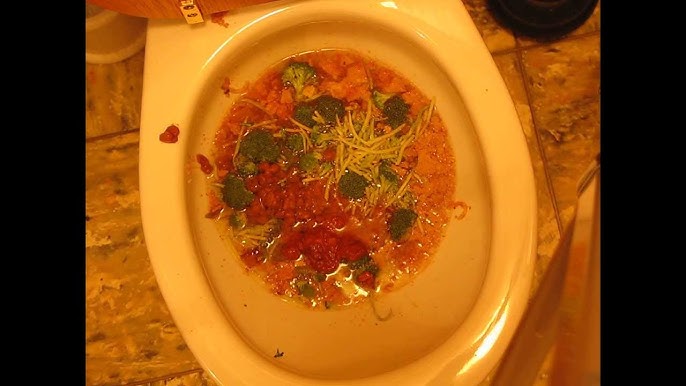Are You Permitted to Flush Food in the Toilet?
Are You Permitted to Flush Food in the Toilet?
Blog Article
What're your insights and beliefs about Think Twice Before Flushing Food Down Your Toilet?

Introduction
Many individuals are typically faced with the predicament of what to do with food waste, specifically when it comes to leftovers or scraps. One typical inquiry that occurs is whether it's all right to purge food down the bathroom. In this short article, we'll explore the reasons that individuals could consider purging food, the consequences of doing so, and alternate methods for proper disposal.
Reasons why people could consider flushing food
Absence of understanding
Some people may not understand the potential injury caused by purging food down the commode. They might incorrectly believe that it's a safe technique.
Ease
Flushing food down the commode may appear like a quick and easy service to dealing with unwanted scraps, especially when there's no neighboring trash bin offered.
Negligence
Sometimes, individuals might simply pick to flush food out of large laziness, without considering the effects of their activities.
Effects of flushing food down the commode
Ecological impact
Food waste that ends up in rivers can contribute to air pollution and harm water environments. Additionally, the water utilized to flush food can strain water resources.
Plumbing issues
Purging food can bring about blocked pipes and drains, triggering costly plumbing fixings and troubles.
Sorts of food that ought to not be purged
Coarse foods
Foods with fibrous appearances such as celery or corn husks can obtain tangled in pipes and create obstructions.
Starchy foods
Starchy foods like pasta and rice can soak up water and swell, causing clogs in pipelines.
Oils and fats
Greasy foods like bacon or cooking oils must never ever be flushed down the toilet as they can strengthen and cause obstructions.
Correct disposal methods for food waste
Using a garbage disposal
For homes furnished with garbage disposals, food scraps can be ground up and purged through the pipes system. Nonetheless, not all foods are suitable for disposal in this fashion.
Recycling
Particular food product packaging materials can be recycled, lowering waste and reducing environmental effect.
Composting
Composting is an environment-friendly way to get rid of food waste. Organic products can be composted and made use of to enrich dirt for gardening.
The value of proper waste administration
Reducing environmental damage
Correct waste monitoring methods, such as composting and recycling, help reduce air pollution and maintain natural resources for future generations.
Securing plumbing systems
By avoiding the technique of flushing food down the commode, homeowners can protect against pricey pipes repair work and keep the honesty of their plumbing systems.
Final thought
Finally, while it may be tempting to purge food down the bathroom for comfort, it is necessary to recognize the possible consequences of this action. By taking on correct waste management techniques and dealing with food waste sensibly, people can contribute to healthier pipes systems and a cleaner setting for all.
THINK TWICE BEFORE FLUSHING FOOD DOWN YOUR TOILET IN FALLBROOK CA
Let’s be honest, we’re really supposed to be tossing rotten or leftover food in the compost bin or trash can. But many people like to place scraps of food down the drain of, say, their kitchen sink. That’s why the garbage disposal was invented: so we can continue to place certain foods down the drain without clogging our drain in the process. Smart.
But not all of us have the luxury of having a garbage disposal installed. So, you might continue to shove food down your sink drain anyway – or worse: you might flush them down your toilet! If you’re guilty of doing the latter, you’re going to want to stop, and here’s why:
Toilet Drains Aren’t Designed to Handle Food!
There’s your answer: food just doesn’t belong in your toilet. It may seem like your toilet drain is wider than the drains of your sinks, but truth be told, that isn’t actually the case. The narrower pipes of your toilet leave your plumbing at risk for clogging if you do happen to flush your food. In addition, food doesn’t break down as quickly that toilet paper and human waste do. In turn, this leaves your toilet at risk for a nasty clog.
Although a flush of a tiny pinch of food every now and then isn’t going to completely damage your toilet, there are certain foods that should absolutely not be flushed in your toilet at all. These include starchy foods like mashed potatoes, grains, hard pieces of food that are slow to break down, and fats and oils.
The latter categories of food are particularly problematic as they may harden, expand as they absorb water, break down slowly in your system, or generally create the perfect obstruction with their gelatinous composition. These are all things you don’t want in your plumbing system!
Experiencing a Toilet Clog?
Nobody’s perfect, and we all make mistakes. Sometimes one of the mistakes people make is flushing food down their toilet and later realizing that it wasn’t the best thing to do once they see that their toilet is now clogged. Uh-oh!

I was shown that write-up on through a good friend on our other website. Don't hesitate to pause to share this blog posting if you appreciated it. I appreciate your readership.
Schedule Services Report this page